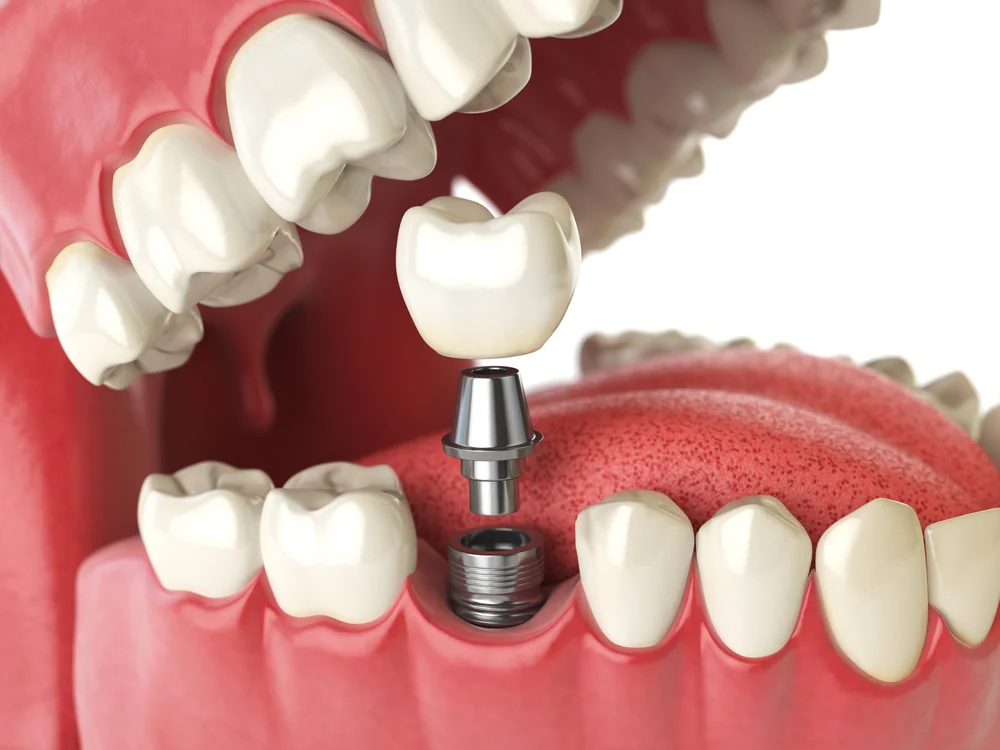The field of dental implants has seen a remarkable transformation over the last few decades, and the future promises even more groundbreaking advancements. Dental implants, which replace missing teeth with artificial roots embedded in the jawbone, have long been regarded as one of the most effective solutions for restoring function and aesthetics. However, recent technological developments are taking this procedure to new heights, enhancing precision, comfort, and long-term outcomes.
The Evolution of Dental Implants
Traditionally, dental implants involved a time-consuming and invasive process. Patients often had to undergo multiple surgeries, with significant healing periods in between. While these implants still offered a more permanent solution compared to dentures or bridges, the procedure was not without challenges. Enter technology—over the past few years, the landscape of dental implants has changed significantly. With the integration of advanced materials, digital workflows, and state-of-the-art equipment, the process has become more efficient, reliable, and patient-friendly.
Facts About Dental Implants
Understanding the facts about dental implants, such as their high success rate and ability to integrate with the jawbone, is crucial for appreciating why they are a leading choice for tooth replacement. Before diving into the technological advancements shaping the future of dental implants, let’s explore some key facts about dental implants:
1. Durability: Dental implants are designed to last for many years, with a success rate of up to 98%. With proper care, they can last a lifetime.
2. Osseointegration: Implants fuse with the jawbone through a process called osseointegration. This integration provides a stable foundation for the artificial tooth.
3. Restoring Function: Dental implants mimic the function of natural teeth, allowing patients to chew, speak, and smile confidently.
4. Bone Preservation: Unlike traditional dentures, implants stimulate bone growth in the jaw, helping to preserve facial structure and prevent bone loss.
5. Customization: Each dental implant is tailored to the individual’s specific anatomy and needs, ensuring a personalized fit and natural appearance.
Advances in Dental Imaging Software
One of the most significant technological innovations in the field of dental implants is the rise of dental imaging software. In the past, implant placement relied heavily on manual measurements, which left room for human error. Now, with the advent of advanced imaging techniques like 3D scanning and cone-beam computed tomography (CBCT), dentists can map the entire structure of a patient’s mouth with incredible accuracy.
Dental imaging software provides a digital representation of the jaw, teeth, and surrounding structures, enabling dental professionals to plan procedures with unparalleled precision. These high-resolution images allow dentists to evaluate bone density, identify potential complications, and determine the optimal placement for implants. This level of detail significantly reduces the risk of complications during surgery and improves the overall success rate of the implant.
Moreover, the integration of dental imaging software with computer-aided design (CAD) and computer-aided manufacturing (CAM) systems has streamlined the implant design process. Dentists can now create highly accurate models of the patient’s mouth and design custom implants that perfectly match the unique contours of the jaw. This digital workflow not only speeds up the process but also reduces the need for trial and error, leading to better-fitting and more natural-looking implants.
3D Printing and Custom Implant Fabrication
Another groundbreaking development in dental implants technology is the use of 3D printing. In combination with advanced dental imaging software, 3D printing allows for the creation of custom implants that are a perfect match for the patient’s unique anatomy. Whether it’s producing surgical guides or directly printing implant components, this technology has greatly improved the precision and efficiency of implant procedures.
3D-printed surgical guides, based on digital scans of the patient’s mouth, allow for pinpoint accuracy during implant placement. These guides ensure that the implant is positioned in the ideal location, reducing the likelihood of complications and improving long-term outcomes. Additionally, 3D printing reduces the cost and time required to create custom implants, making this cutting-edge technology more accessible to a wider range of patients.
Robotic-Assisted Implant Surgery
The rise of robotic-assisted surgery is another exciting development in the field of dental implants. Robots can assist dentists in performing complex procedures with extreme precision, minimizing the risk of human error. These systems are often integrated with dental imaging software, allowing the robot to follow a pre-planned, highly detailed surgical pathway. This technology enhances the dentist’s ability to navigate difficult anatomical structures, improving the success rate of challenging cases.
Robotic-assisted surgery is particularly useful in situations where bone density or structure may pose a challenge. For example, when placing implants in patients with limited bone volume, the precision of robotic systems ensures that the implant is placed in the optimal position, avoiding nerve damage or other complications.
Biocompatible Materials and Improved Osseointegration
While traditional dental implants are typically made of titanium, advancements in biocompatible materials are offering new options for patients. One such material is zirconia, a ceramic that is gaining popularity due to its aesthetic qualities and strength. Zirconia implants are tooth-colored, making them an attractive option for patients seeking a more natural look.
Beyond aesthetics, new materials are also improving the biological interaction between the implant and the jawbone. These advanced materials promote faster and more reliable osseointegration, reducing healing times and improving the stability of the implant. Researchers are even exploring the use of bioactive coatings that could stimulate bone regeneration and further enhance the longevity of dental implants.
The Role of Artificial Intelligence (AI) and Machine Learning
The incorporation of artificial intelligence (AI) and machine learning into dental implant technology is another area of rapid growth. AI-powered algorithms can analyze a patient’s dental records, images, and overall health to create a tailored treatment plan. By predicting potential complications and offering real-time suggestions, AI assists dentists in making informed decisions, leading to safer and more predictable outcomes.
Additionally, AI-based systems can help monitor a patient’s healing process post-surgery, alerting dentists to any signs of infection or implant failure. This proactive approach allows for early intervention, reducing the risk of long-term complications.
The future of dental implants is brighter than ever, thanks to continuous advancements in technology. From dental imaging software and 3D printing to robotic-assisted surgery and biocompatible materials, these innovations are revolutionizing the way dental implants are planned, fabricated, and placed. As these technologies continue to evolve, patients can look forward to faster, more comfortable, and more successful implant procedures, transforming the field of tooth replacement.
Keep an eye for more news & updates on BuzzsLash!




